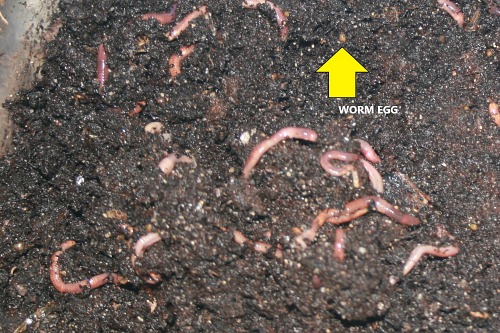Comprehensive Lawn Care Tips from Red Wiggler Express
Comprehensive Lawn Care Tips from Red Wiggler Express
Blog Article
Red Wigglers: The Unsung Heroes of Organic Waste Recycling
Red wigglers, or Eisenia fetida, offer as important agents in the organic waste reusing procedure, transforming disposed of products right into useful vermicompost. Their effective failure of natural matter not just enhances dirt high quality but also adds to sustainable waste monitoring techniques. As the world significantly seeks options to battle waste buildup and enhance agricultural productivity, comprehending the role of these worms ends up being necessary. What devices allow them to flourish in compost atmospheres, and exactly how can they be properly made use of in both residential and industrial settings? Checking out these inquiries exposes the wider implications of vermicomposting in our eco-friendly landscape.
What Are Red Wigglers?
The impressive durability of red wigglers, medically referred to as Eisenia fetida, highlights their crucial function in organic waste recycling. These little, reddish-brown earthworms are generally discovered in disintegrating raw material, such as compost heaps and manure stacks. Lake Hickory Bait. Unlike other earthworm species, red wigglers flourish in nutrient-rich environments and are very reliable at breaking down organic materials, making them vital for vermicomposting

(Red Wiggler Express)In addition to their function in waste reduction, red wigglers add to dirt wellness by boosting dirt framework and oygenation via their tunneling activities (Lake Hickory Bait). Their existence in composting systems not just enhances decay prices but also promotes a sustainable method to lose management, highlighting their significance in environmental conservation initiatives
Advantages of Composting With Worms
Composting with worms, particularly red wigglers, uses various advantages that boost both waste management and soil health. First, these worms effectively break down organic waste, transforming it right into nutrient-rich vermicompost that enriches soil. This process increases disintegration, permitting a much faster recycling of cooking area scraps and other organic materials compared to typical composting methods.
Furthermore, the vermicompost created by red wigglers is teeming with beneficial microbes, which help improve soil structure, aeration, and dampness retention. This boosts the overall health of plants, advertising strenuous growth and boosted returns in gardens and agricultural settings. Additionally, using worms in composting minimizes the production of greenhouse gases, such as methane, adding to a much more lasting waste management system.

Exactly How to Beginning Vermicomposting
Developing a vermicomposting system is a straightforward process that can produce significant advantages for both waste monitoring and soil enrichment. To begin, select an appropriate container, such as a plastic bin or wood box, with ample air flow openings to ensure appropriate air flow. The measurements need to ideally be around 2 feet by 3 feet, permitting enough room for the worms to flourish.
Following, prepare bedding material, which can contain shredded paper, cardboard, or coconut coir. This bed linen should be dampened to produce an ideal habitat for the worms. Once the bedding is in place, introduce red wigglers (Eisenia fetida) right into the bin, generally around one extra pound of worms for every square foot of surface.
Following the placement of worms, add natural waste, such as fruit and vegetable scraps, coffee premises, and smashed eggshells. With these actions, you will effectively launch a vermicomposting system that adds to sustainable waste administration and enhances your dirt.
Preserving a Healthy Worm Container
(Red Wiggler Express)Keeping a worm bin prospering requires routine interest and like make sure the health and wellness of the red wigglers and the efficiency of the composting procedure. Correct upkeep starts with monitoring the moisture levels; the container needs to perspire but not soaked. A good guideline is to keep a consistency comparable to a wrung-out sponge.
Gently blending the bed linens and food scraps every couple of weeks avoids compaction and makes certain that all worms have accessibility to oxygen. Furthermore, it is important to feed the worms properly.
Temperature level policy is another crucial aspect. Red wigglers prosper in a series of 55 to 77 degrees Fahrenheit. If the container ends up being as well warm or cold, the worms may end up being stressed - Lake Hickory Bait. Regularly examine for indications of wellness, such as worm populace development and the visibility of healthy castings. By faithfully managing these aspects, one can maintain a robust and effective worm container.
Effect On Sustainable Living
The successful upkeep of a worm bin not just benefits the health and wellness of red wigglers yet also adds dramatically to lasting living practices. By reusing natural waste, such as kitchen area scraps and yard particles, red wigglers help draw away considerable amounts of product from garbage dumps. This reduction in waste not just decreases greenhouse gas exhausts however also decreases the environmental burden connected why not try here with waste administration.
Moreover, the spreadings produced by red wigglers function as a nutrient-rich organic plant food, boosting dirt health and promoting plant development. This natural option to chemical fertilizers sustains sustainable agriculture and horticulture methods, reducing dependence on artificial inputs that can hurt ecosystems. Furthermore, worm composting fosters understanding of waste management, motivating people and communities to embrace more lasting practices.

Final Thought
In recap, red wigglers function as crucial factors to natural waste reusing with their reliable disintegration of natural products. Their capability to create nutrient-rich vermicompost improves soil health and wellness and supports sustainable agricultural practices. By integrating vermicomposting right into waste monitoring approaches, people and areas can dramatically lower waste while advertising ecological sustainability. The function of Eisenia fetida in cultivating healthy and balanced ecological communities emphasizes the relevance of these microorganisms in accomplishing sustainable living and improving soil fertility.
Report this page